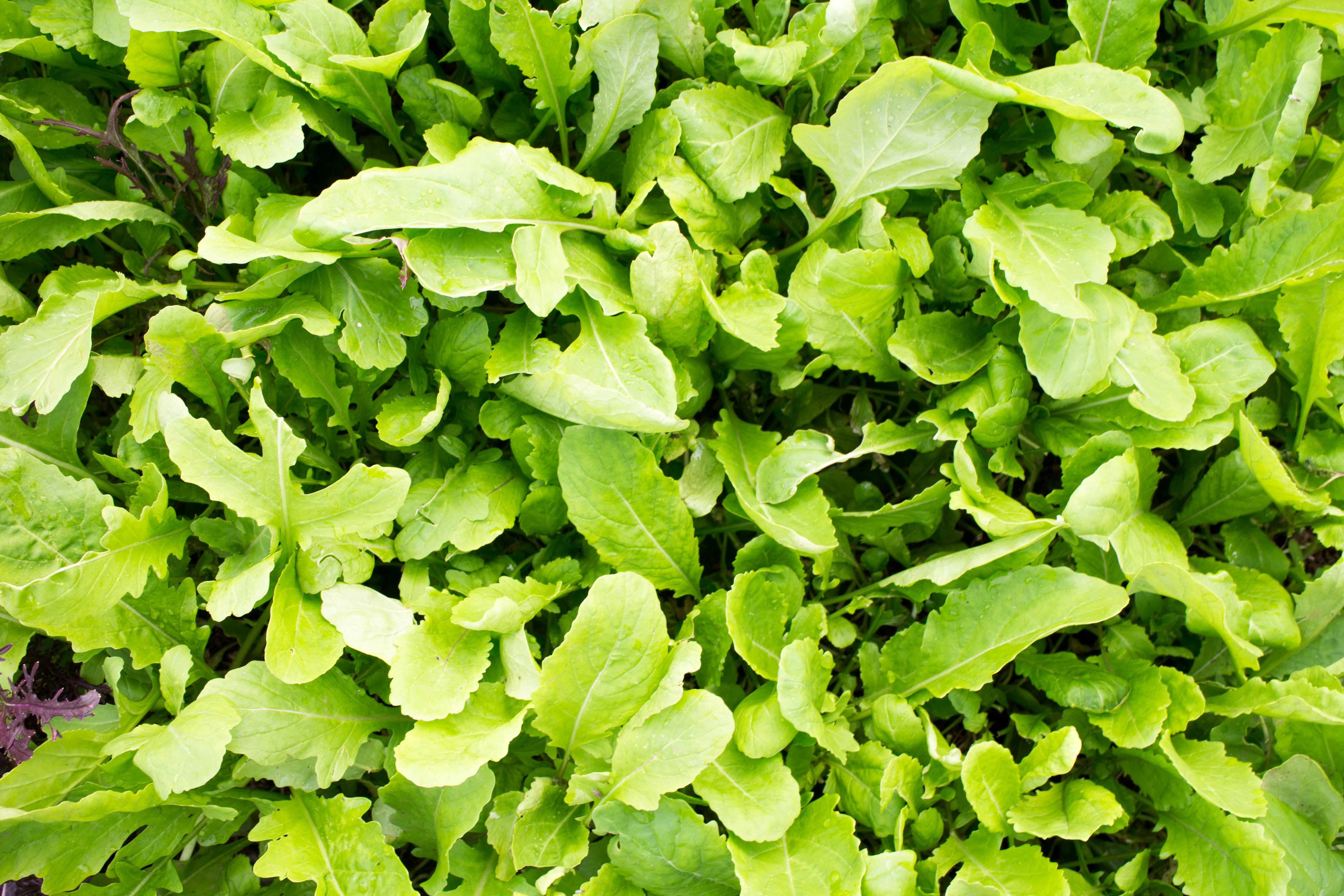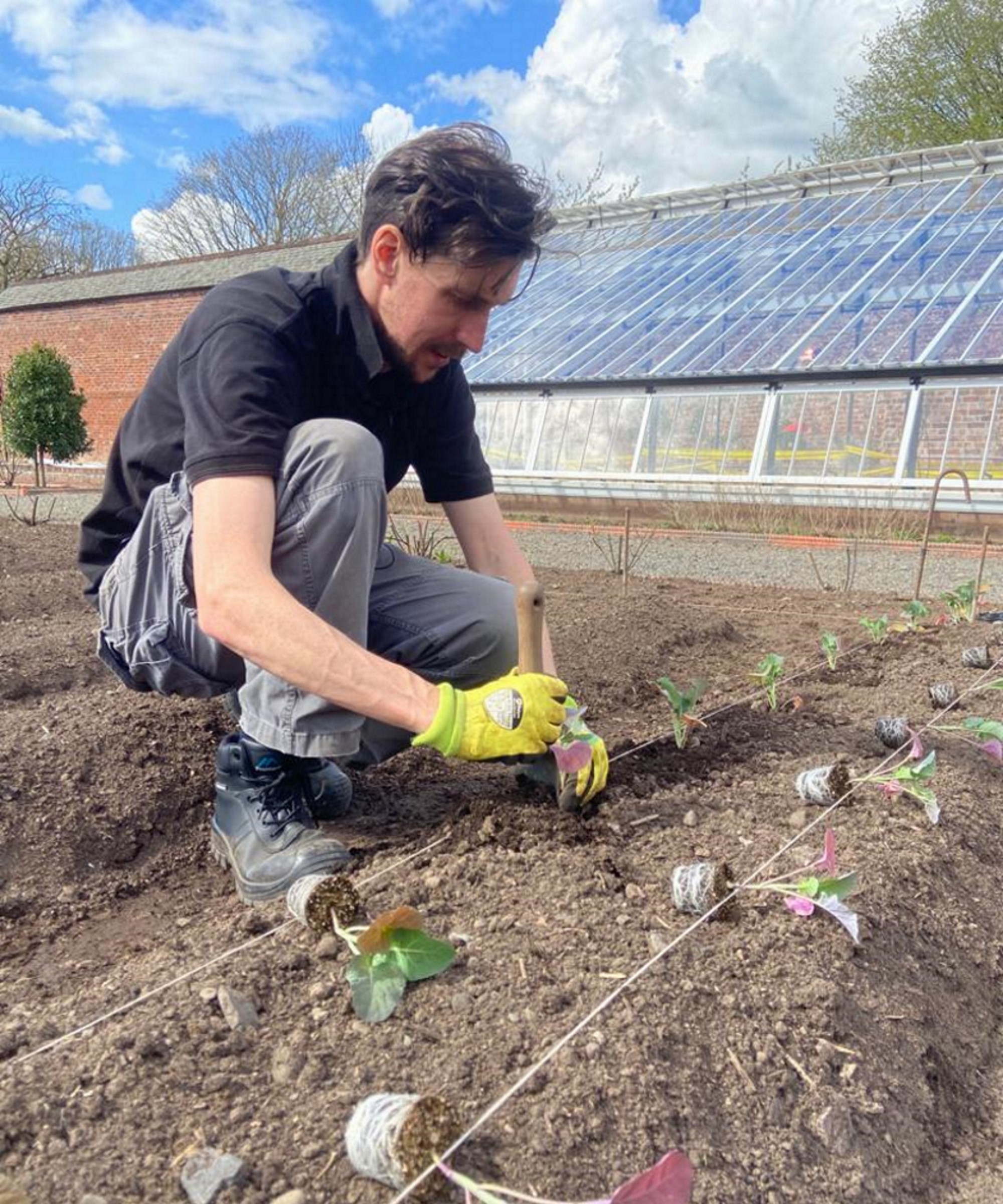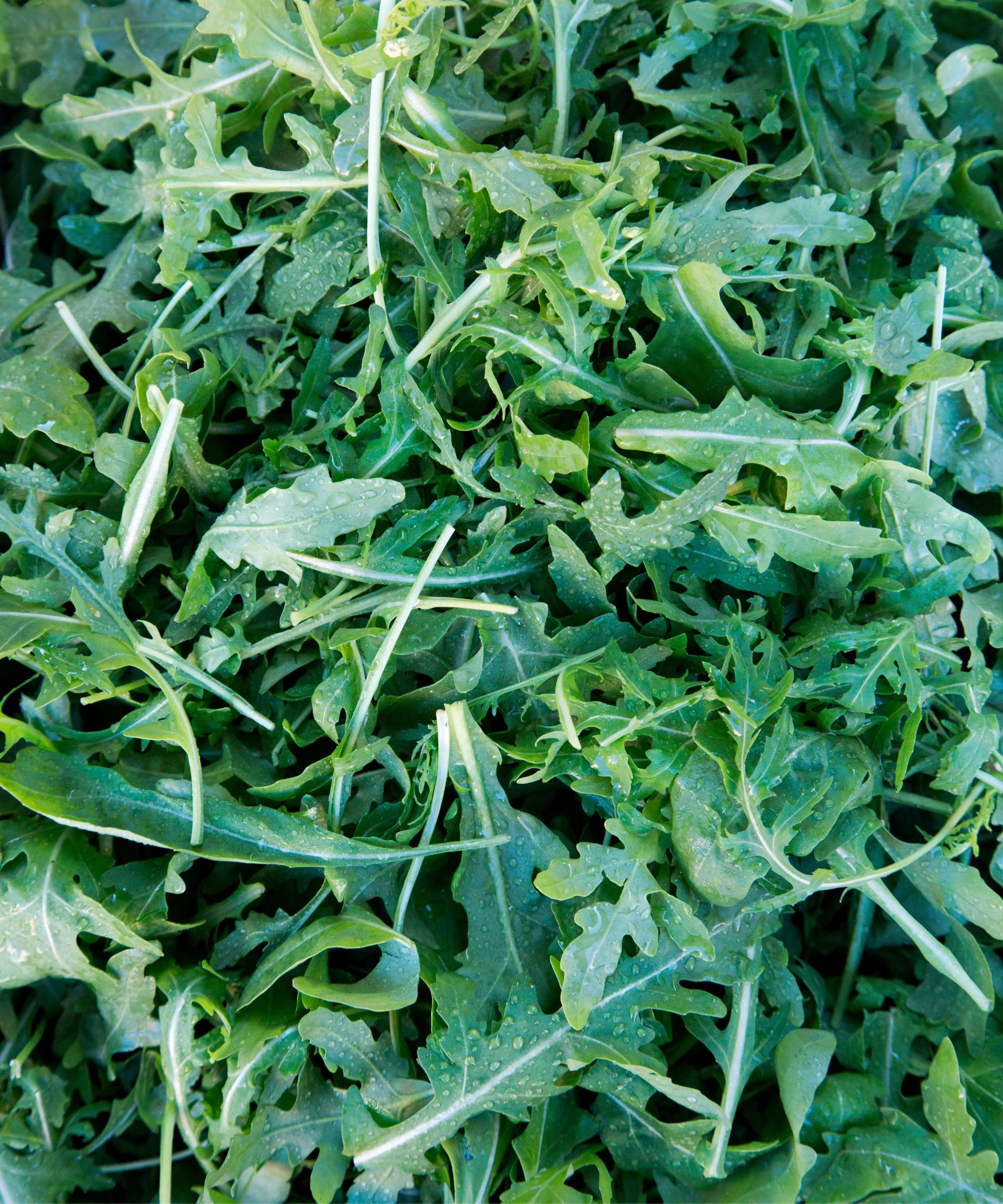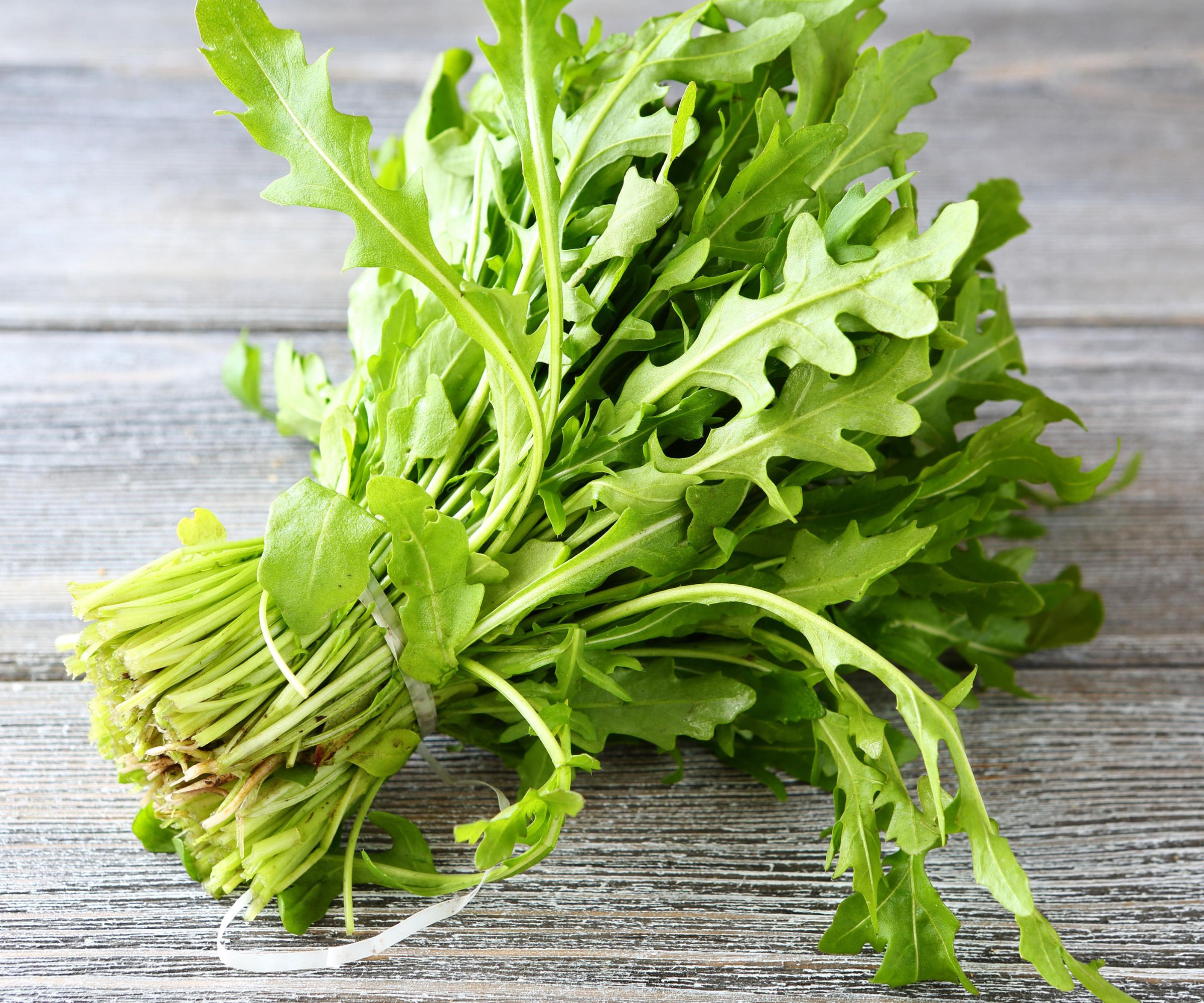When to harvest arugula – an expert guide to getting the perfect flavor
From your garden to your kitchen, it's all about timing to get the best flavor out of this spicy salad staple


Arugula, also known as rocket, is the yummy, peppery brassica that's perfect for spicing up salads, sandwiches, even pizza. To get the best flavor from your leaves, though, you need to know exactly when to harvest arugula.
If you are harvesting lettuce, you may pick arugula at the same time, and you can choose to do so from both young and more mature plants. Ruth Hayes, gardening expert for Homes & Gardens comments: ‘It is a versatile plant and can be harvested as baby leaves or as fully mature additions to your salads and stir fries as a spinach substitute. The flowers are also edible if you let your plants run to seed.’
This cut-and-come-again, fast growing vegetable can be harvested soon after seeding and continuously harvested all season long, which in fact is beneficial, says Tony O'Neill from Simplify Gardening: 'Frequent harvesting encourages new growth, so don't hesitate to pick those leaves as they reach the ideal size.'
However, you may want to work out which stage of your arugula's maturity hits the right flavor notes for you so that you can harvest it at the right time for you. Our experts provide their best tips to guide you to your harvest arugula at the right time.

Ruth is horticulturally trained and has qualifications from the Royal Horticultural Society. She spends her days writing about and photographing key gardening jobs, and always enjoys sowing a wide range of flower seeds in her own garden.
When to harvest arugula for the best flavor

Fern Berg, gardening expert and founder of Tree Vitalize advises, 'Generally speaking, arugula can be harvested at three stages of its growth. The plant will reach maturity about 40 days after planting, but you can often begin harvesting your arugula by means of "grazing" after about 20 days of growth.
'This will allow you to enjoy the milder, baby leaves as the plant is growing. Grazing involves pinching off just a few leaves from each plant. It is best to take the outer leaves and not to take too many from any one plant.'
'The smaller leaves will have a smoother and milder flavor, so you may want to base which leaves you're going to harvest on what you want to eat them with. Milder tasting ones may be better for salads, for example.'
Although you can start harvesting your arugula after 20 to 50 days after they've been sown, 'getting the timing right is key, leave the leaves for too long and they will get bitter and tough, especially once the plant starts to flower', warns Drew Swainston, kitchen gardening expert at Homes & Gardens.
Drew suggests that as a general rule for getting the best flavor, 'You want to start cropping the leaves when they get to three inches long.'
David Cohen, the CEO of Badais International adds, 'Arugula is typically harvested when the leaves are young and tender, before they become too mature and develop a bitter taste. The exact timing for harvesting arugula depends on your desired taste and the growing conditions.
'Regular harvesting promotes new growth and helps prevent the plant from bolting (going to seed). Simply cut the leaves off near the base of the plant, leaving a few inches for regrowth.'
We recommend using this highly-rated Fiskars harvesting tool from Amazon for this job.
Fern Berg of Tree Vitalize continues: 'During peak maturity, about 30 to 40 days after planting your arugula, you can harvest up to one-third of the plant by cutting the outer leaves with gardening shears or high-quality kitchen scissors. The plant will continue to grow and you can keep harvesting by this method each time your arugula fills back out with leaves.'

Fern has planted and currently cares for over 100 different native and exotic fruit, nut, and ornamental trees. She also cultivates an extensive vegetable garden, several flower gardens and cares for an ever-growing happy family of indoor plants. Fern has a special interest in biodynamic farming, food production and closed loop agriculture. Fern founded Tree Vitalize to help guide others with an interest in tree planting, identification and care.

Drew qualified as a journalist before studying for a horticulture qualification, after which he worked as a professional gardener for several years, specializing in kitchen gardening. He's now bringing his expertise and passion to Homes & Gardens as a member of our team.
When to harvest arugula according to the weather
Much like when you plant vegetables, when you harvest them depends on the weather.
Tony O'Neill from Simplify Gardening comments, 'It's worth noting that arugula is a cool-weather crop and tends to bolt or produce flowers in hot weather. If you see signs of bolting, it's best to harvest the entire plant immediately, as the leaves will soon become too bitter to enjoy.'
What time of day to harvest arugula?

'The best time to harvest arugula is in the morning, when the leaves have the most moisture, and to keep them shaded from the sun after cropping to ensure they reach the plate in the best condition,' advises Drew Swainston.
Fern Berg of Tree Vitalize agrees: 'Arugula, as with all leafy greens, is best harvested during the coolest parts of the day. The reason for this is that once picked, the leaves will begin to lose their moisture and wilt. To avoid this, pick your arugula after the dew has evaporated in the morning, late afternoon works as well.
'If you do need to harvest your arugula during the heat of the day, be sure to get it inside and into a cool location as soon as possible, before too much wilting occurs.'
When to harvest to prevent 'bolting'

'Finally, at the end of the season when you notice that your arugula is beginning to grow taller in the center of the plant, this is a sign that flowers are beginning to form – a process often referred to as "bolting". At this stage, you have two options. The first is to pull out the entire plant for eating. Alternatively, you can let the plant flower and collect the seeds for next year's crop!' continues Fern.
It's easy to spot if your arugula is about to bolt, since you'll spot small weedy leaves at the top of the plant that will lack the rounded shape of the leaves; new growth might be restricted largely to white flowers. The leaves will taste more bitter, too.
FAQs
Can you harvest arugula seeds?
Once your arugula has entered its flowering and seeding season (normally when the weather is hotter), seed pods will form. Leave them undisturbed until, like the arugula flowers, they have dried out and turned yellow.
Simply shake the seed pod to test if it is ready to be harvested. If you can hear the rattling of the seeds inside the pod then it's time to cut the stalk below the pod and get ready to harvest the seeds.
Since each stalk will have produced hundreds of seeds, the quickest and easiest way to separate the plant debris from the seeds is to hold the stalks above a colander with a bowl underneath and rub the stalk. This should open the seed pods which will fall through the colander and into the bowl, while keeping all the debris in the colander.
This way you can keep your arugula seeds in a dark, cool place, ready for the next fall or spring to keep your arugula plant's lifecycle going.
The beauty of a cut-and-come-again salad leaf like arugula is that you can combine it with others in your kitchen garden, allowing it to replenish itself and regrow between your meals – always put in a few more plants than you think you'll need so that each individual plant has the opportunity to regrow between cuts.
Sign up to the Homes & Gardens newsletter
Design expertise in your inbox – from inspiring decorating ideas and beautiful celebrity homes to practical gardening advice and shopping round-ups.

Lola Houlton is a news writer for Homes & Gardens. She has been writing content for Future PLC for the past six years, in particular Homes & Gardens, Real Homes and GardeningEtc. She writes on a broad range of subjects, including practical household advice, recipe articles, and product reviews, working closely with experts in their fields to cover everything from heating to home organization through to house plants. Lola is a graduate, who completed her degree in Psychology at the University of Sussex. She has also spent some time working at the BBC.
-
 How to grow impatiens – garden experts reveal the secrets to growing this shade-tolerant, sparkling summer plant
How to grow impatiens – garden experts reveal the secrets to growing this shade-tolerant, sparkling summer plantBoth 'Busy Lizzie' and 'New Guinea' impatiens can thrive in shady yards
By Ellen Wells Published
-
 Charli XCX's dining room is a 'treasure-trove' of one-of-a-kind pieces – it's the most unique hosting space I've ever seen (and surprisingly replicable)
Charli XCX's dining room is a 'treasure-trove' of one-of-a-kind pieces – it's the most unique hosting space I've ever seen (and surprisingly replicable)The singer's Tudor-style dining room features eclectic furnishings, a mix of patterns and bright colors that all work together beautifully
By Hannah Ziegler Published